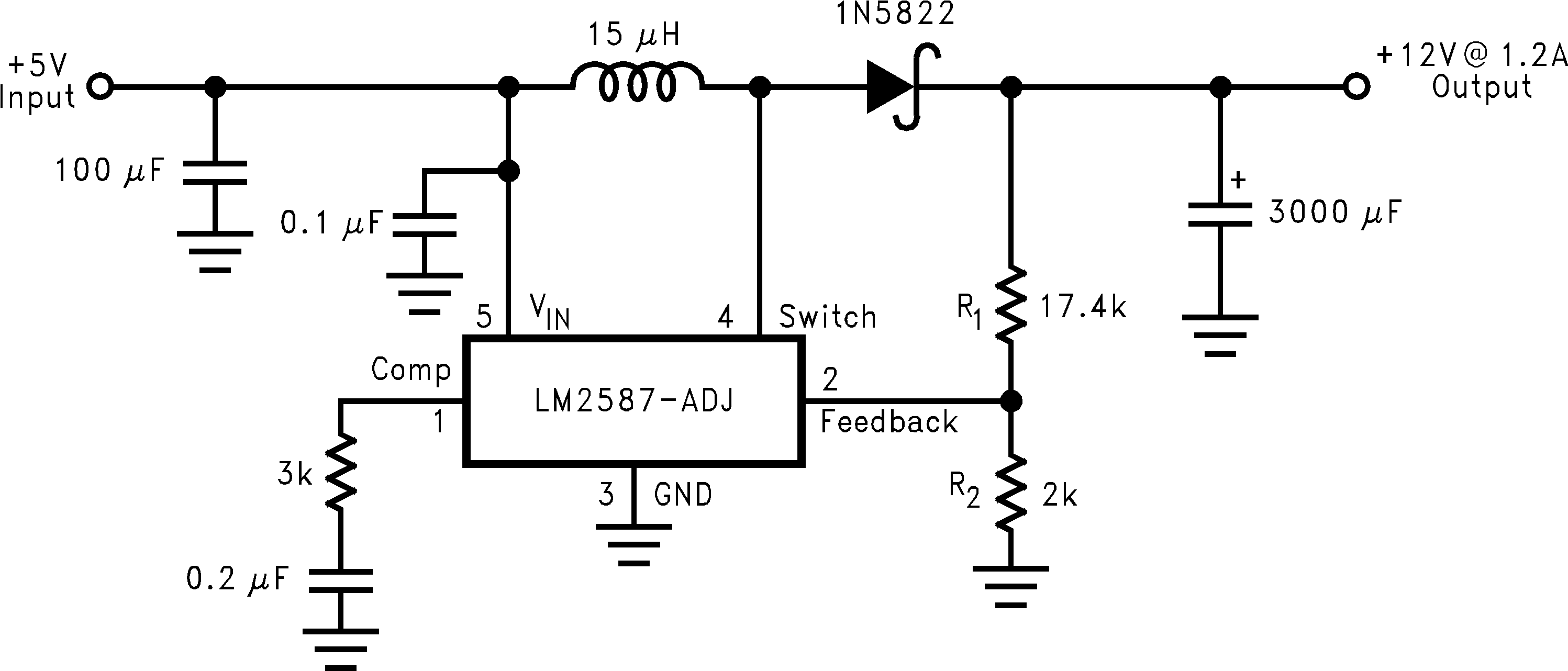SNVS115E April 2000 – June 2019 LM2587
PRODUCTION DATA.
- 1 Features
- 2 Typical Applications
- 3 Description
- 4 Revision History
- 5 Pin Configurations
-
6 Specifications
- 6.1 Absolute Maximum Ratings
- 6.2 ESDRatings
- 6.3 Recommended Operating Ratings
- 6.4 Thermal Information
- 6.5 Electrical Characteristics: 3.3 V
- 6.6 Electrical Characteristics: 5 V
- 6.7 Electrical Characteristics: 12 V
- 6.8 Electrical Characteristics: Adjustable
- 6.9 Electrical Characteristics: All Output Voltage Versions
- 6.10 Typical Characteristics
- 7 Detailed Description
- 8 Application And Implementation
- 9 Layout
- 10Device and Documentation Support
- 11Mechanical, Packaging, and Orderable Information
Package Options
Mechanical Data (Package|Pins)
Thermal pad, mechanical data (Package|Pins)
- KTT|5
Orderable Information
8.2.1 Typical Boost Regulator Applications
Figure 18 through Figure 21 show four typical boost applications)—one fixed and three using the adjustable version of the LM2587. Each drawing contains the part number(s) and manufacturer(s) for every component. For the fixed 12-V output application, the part numbers and manufacturers' names for the inductor are listed in . For applications with different output voltages, refer to the Switchers Made Simple software.
 Figure 17. Boost Regulator
Figure 17. Boost Regulator  Figure 18. 5-V To 12-V Boost Regulator
Figure 18. 5-V To 12-V Boost Regulator  Figure 19. 12-V To 24-V Boost Regulator
Figure 19. 12-V To 24-V Boost Regulator  Figure 20. 24-V To 36-V Boost Regulator
Figure 20. 24-V To 36-V Boost Regulator 
*The LM2585 will require a heat sink in these applications. The size of the heat sink will depend on the maximum ambient temperature. To calculate the thermal resistance of the IC and the size of the heat sink needed, see
Figure 21. 24-V To 48-V Boost Regulator